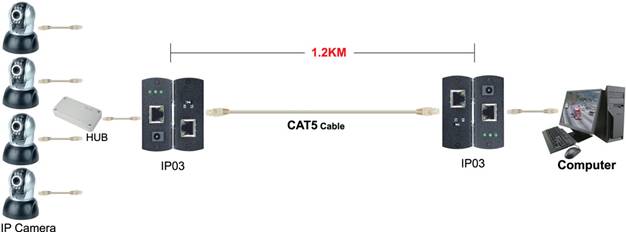CCTV systems help keep places safe. They record video to watch what happens. But to work well, CCTV cameras need good cables. Sometimes, these cameras are far from the recording device. This means you need long distance CCTV cabling solutions.
Why Long Distance CCTV Cabling is Important
When CCTV cameras are far from the main system, signals can weaken. Weak signals mean poor video quality. Sometimes, the signal may not reach the recorder at all.
Good cabling helps send clear video signals even from far away. This keeps the security system working well.
Types of CCTV Cables for Long Distance
There are many cables to use for CCTV. Some work better for long distances. Here are some common types:
- Coaxial Cable (RG59 and RG6): Used in older CCTV systems. RG6 is better for longer distances than RG59.
- Twisted Pair Cable (Cat5e, Cat6): Used for IP cameras. Can carry data and power if used with PoE.
- Fiber Optic Cable: Best for very long distances. Can send signals over kilometers without losing quality.
How Far Can CCTV Cables Run?
Different cables have limits on how far they can run. Here is a quick look:
| Cable Type | Maximum Distance | Notes |
|---|---|---|
| Coaxial RG59 | Up to 300 feet (90 meters) | Good for short distances only |
| Coaxial RG6 | Up to 600 feet (180 meters) | Better for medium distances |
| Twisted Pair (Cat5e/Cat6) | Up to 328 feet (100 meters) | Use with PoE for power and data |
| Fiber Optic | Up to 10 kilometers or more | Best for very long distances |
Problems with Long Distance CCTV Cabling
Long cables can cause issues. The main problems are:
- Signal Loss: Signal gets weaker over long cables.
- Interference: Other electric signals can cause noise.
- Power Drop: Cameras may not get enough power.
These problems can reduce video quality and cause camera failure.
How to Solve These Problems
There are ways to fix long distance cabling issues:
- Use Signal Boosters or Amplifiers: These devices strengthen the signal.
- Choose Better Cable Types: Fiber optic cables do not lose signal easily.
- Use Power over Ethernet (PoE): PoE sends power and data over one cable.
- Install Repeaters: Repeaters help extend cable length by refreshing signals.

Credit: www.foresight-cctv.com
Fiber Optic Cable: The Best Choice for Long Distance
Fiber optic cables use light to send data. This means no signal loss over long distances. Fiber cables can run several kilometers without problems.
They also resist interference from other devices. This keeps the video clear and steady.
One downside is fiber optic cables cost more. But they last longer and work better for big setups.
Coaxial Cable with Video Baluns
Video baluns help send video signals over twisted pair cables. They convert signals so cameras work with Cat5 or Cat6 cables.
This method can extend distance up to 1,200 feet (around 365 meters). It is cheaper than fiber but not as far.
Power Supply for Long Distance Cameras
Cameras need power to work. When cables are long, power may drop.
Using PoE (Power over Ethernet) helps. It sends power and data on one cable. This makes installation easier.
For analog cameras, use power amplifiers or separate power lines.
Tips for Installing Long Distance CCTV Cabling
- Plan the Route: Choose the shortest, safest cable path.
- Use High-Quality Cables: Better cables mean better video.
- Protect Cables: Use conduit or cable trays to protect from damage.
- Check Signal Strength: Test cameras before final setup.
- Use Grounding: Ground cables to reduce interference.
- Label Cables: This helps during maintenance and troubleshooting.
Cost Considerations
Long distance cabling can increase costs. Fiber optic cables and special devices cost more.
But good cables save money in the long run. They reduce repairs and improve video quality.
Always balance cost and quality. Choose a solution that fits your needs and budget.

Credit: www.amazon.com
Summary
Long distance CCTV cabling needs careful planning. Choose the right cable for your distance.
Fiber optic is best for very long runs. Coaxial and twisted pair work for shorter distances.
Use boosters, PoE, and repeaters to improve signal and power.
Protect cables and test the system before final use.
Good cabling keeps your CCTV system reliable and clear.
Final Thoughts
Security is important. A CCTV system works best with good cabling.
Long distance cabling can be tricky but is possible. Use the right tools and cables.
Remember, clear video means better safety.
Frequently Asked Questions
What Is The Best Cable For Long Distance Cctv Wiring?
Cat6 or RG59 coaxial cables are commonly used for long-distance CCTV connections due to low signal loss.
How Far Can Cctv Cables Run Without Signal Loss?
CCTV cables can run up to 300 meters with proper cable and signal boosters to maintain quality.
Can I Use Ethernet Cable For Long Distance Cctv?
Yes, Ethernet cables like Cat5e or Cat6 work well with IP cameras over long distances.
What Devices Help Extend Cctv Cable Range?
Signal boosters, PoE extenders, and video baluns help increase CCTV cable distance without losing signal.